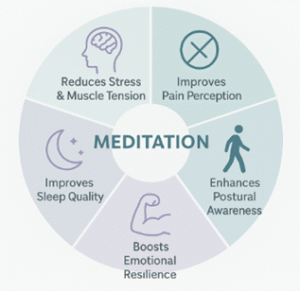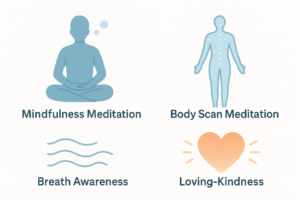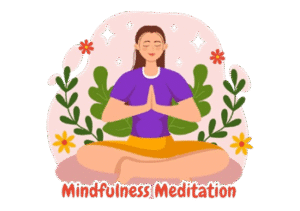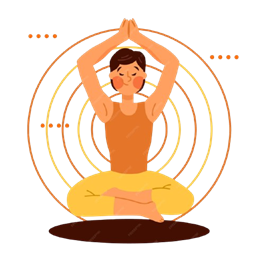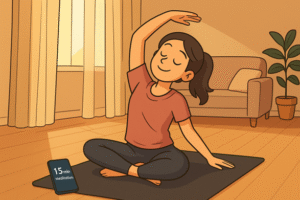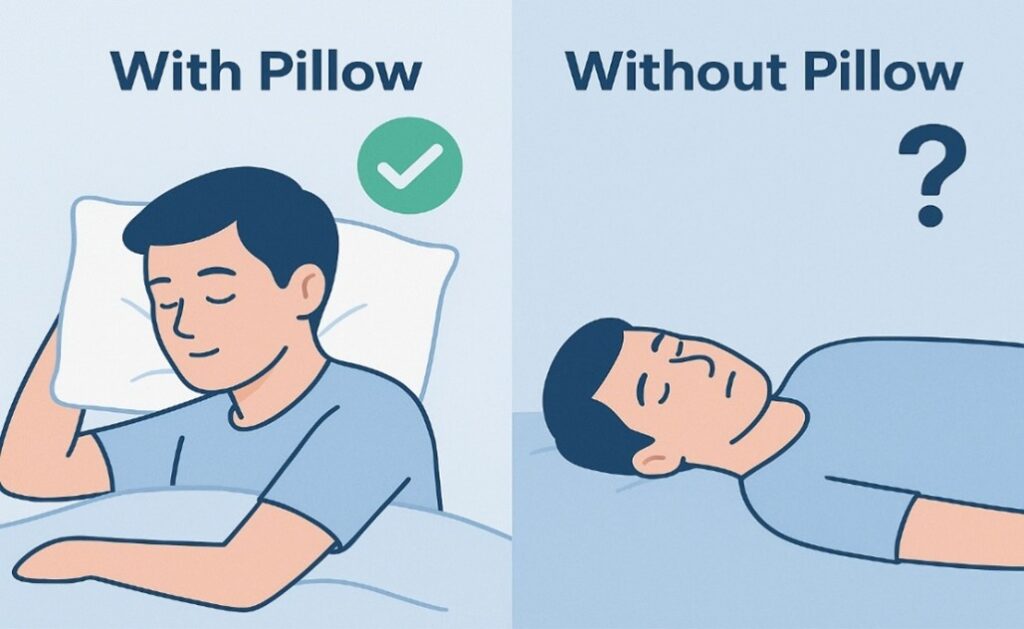Introduction:
Chronic back pain is one of the most common health problems worldwide, affecting people of all ages and lifestyles. It can result from poor posture, spinal conditions, injury, or even stress-related muscle tension. While medical treatments and physical therapy play a central role in pain relief, many individuals are now exploring mind-body techniques like meditation to complement conventional care. But can meditation truly help manage chronic back pain? Research increasingly suggests that it can.
Understanding Chronic Back Pain:
Chronic back pain is typically defined as pain lasting longer than 12 weeks, even after the initial injury or underlying cause has been treated. Over time, the pain can become more complex, influenced not only by physical factors but also by emotional stress, anxiety, and fear of movement. These psychological factors can heighten pain perception and interfere with recovery
The Mind-Body Connection in Pain:
Pain is not purely a physical sensation—it’s an experience shaped by the brain. The way the brain interprets pain signals determines how severe the discomfort feels. When stress and negative emotions dominate, the brain becomes more sensitive to pain. Meditation helps calm the nervous system, balance emotions, and change how the brain processes pain signals, leading to a noticeable reduction in discomfort.
How Meditation Helps Relieve Back Pain:
-
Reduces Stress and Muscle Tension:
Meditation triggers the body’s natural relaxation response, reducing the production of stress hormones like cortisol. This helps relax tight muscles in the back and improves circulation, easing pain caused by tension and stiffness.
-
Improves Pain Perception:
Studies using brain imaging have shown that regular meditation alters activity in the brain areas that control pain perception. Rather than eliminating pain completely, it helps individuals feel the pain as less intense or distressing.
-
Enhances Postural Awareness:
Mindfulness meditation increases body awareness, making it easier to notice poor posture or movements that strain the back. With better awareness, people can adopt healthier sitting, standing, and movement habits.
-
Boosts Emotional Resilience:
Chronic pain often leads to frustration, fear, or depression. Meditation cultivates calmness and acceptance, helping individuals respond to pain with less emotional reactivity and greater control.
-
Improves Sleep Quality:
Back pain frequently disrupts sleep, which can worsen pain sensitivity. Meditation techniques such as deep breathing or body scan meditation promote relaxation and better sleep patterns.
Types of Meditation Useful for Back Pain:
- Mindfulness Meditation: Focuses on being aware of body sensations and thoughts without judgment.
5-Minute Mindfulness Meditation (Example):
- Find a quiet space: Sit comfortably with your back straight and eyes closed or softly focused.
- Focus on your breath: Notice each inhale and exhale without trying to change it.
- Observe your thoughts: When thoughts appear, acknowledge them and gently return to your breath.
- Scan your body: Feel sensations in your body; breathe into any areas of tension.
- Expand awareness: Notice surrounding sounds, air, and your sense of calm.
- End gently: Take a deep breath, open your eyes, and notice how centered you feel.
- Body Scan Meditation: Guides attention through different parts of the body, promoting relaxation and releasing tension.
5-Minute Body Scan Meditation (Example):
- Get comfortable: Sit or lie down, close your eyes, and breathe deeply.
- Scan your body: Move attention slowly from head to toes, noticing each area.
- Release tension: Breathe into any tight spots and let them soften.
- Feel whole: Sense your entire body relaxed and calm.
- End gently: Take a deep breath, exhale, and open your eyes.
- Breath Awareness Meditation: Uses controlled breathing to calm the mind and reduce physical stress.
5-Minute Breath Awareness Meditation (Example):
- Get comfortable: Sit or lie down with a straight back. Close your eyes.
- Focus on your breath: Notice the natural rhythm of your inhalation and exhalation.
- Observe sensations: Feel the air entering your nose, filling your lungs, and leaving your body.
- Gently return: When your mind wanders, calmly bring attention back to the breath.
- End calmly: Take a deep breath, exhale slowly, and open your eyes, noticing your sense of calm.
- Loving-Kindness Meditation: Encourages positive emotions and self-compassion, which support emotional healing.
5-Minute Loving-Kindness Meditation (Example):
- Get comfortable: Sit or lie down, close your eyes, and take a few deep breaths.
- Focus on yourself: Silently repeat phrases like, “May I be happy. May I be healthy. May I be safe. May I live with ease.”
- Extend to others: Bring to mind someone you care about and repeat similar phrases for them.
- Expand further: Gradually include acquaintances, neutral people, and even those you have conflicts with.
- End gently: Take a deep breath, feel the warmth in your heart, and open your eyes with a sense of compassion.
Incorporating Meditation into Daily Life:
You don’t need long sessions to feel the benefits—just 10 to 15 minutes daily can make a difference. Meditation can be practiced while sitting comfortably, lying down, or even during gentle stretching. Combining meditation with physical therapy, ergonomic adjustments, and regular exercise can lead to better long-term outcomes for chronic back pain management.
Conclusion:
Meditation is not a quick fix for chronic back pain, but it is a valuable and effective tool for managing discomfort and improving quality of life. By calming the mind, reducing stress, and reshaping the body’s response to pain, meditation empowers individuals to take an active role in their recovery. When practiced consistently, it can become an essential part of a holistic pain management plan—helping both the mind and the spine find lasting balance.




